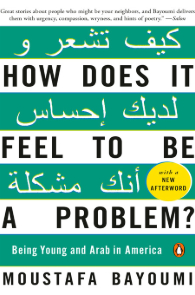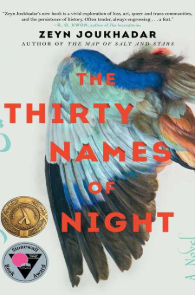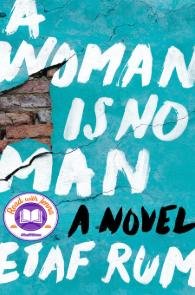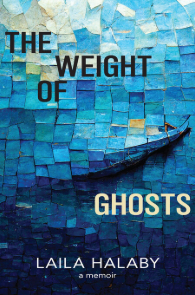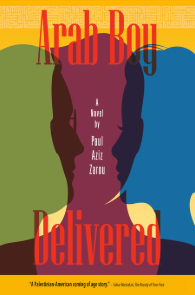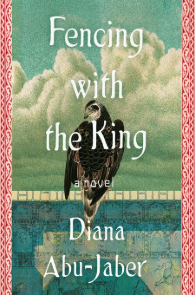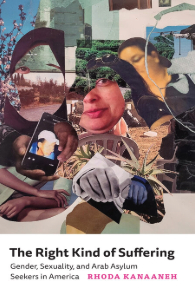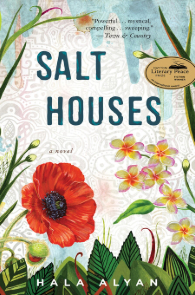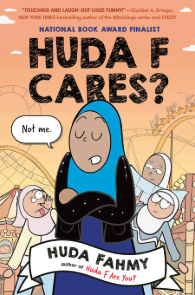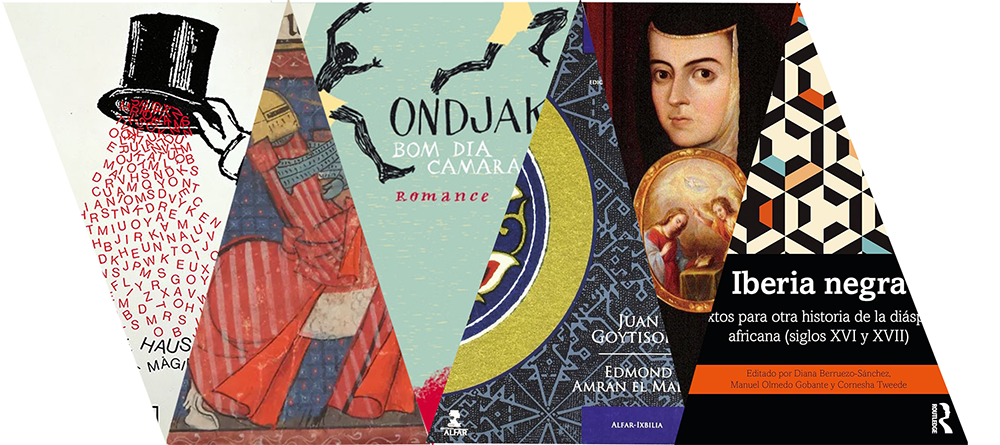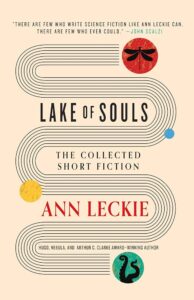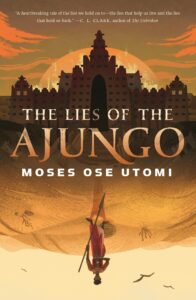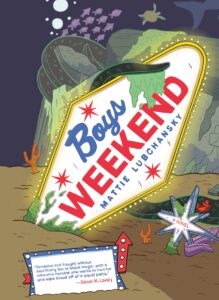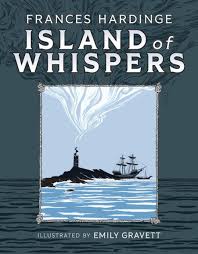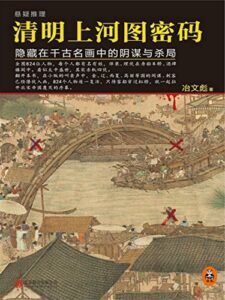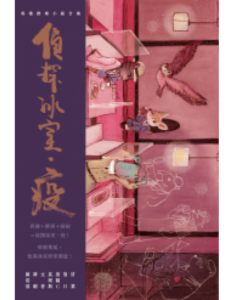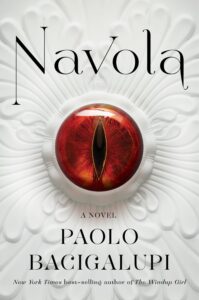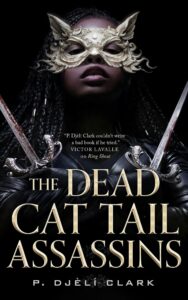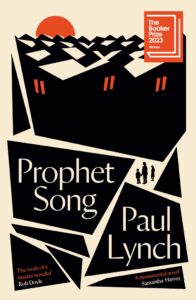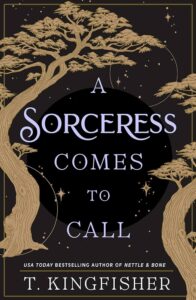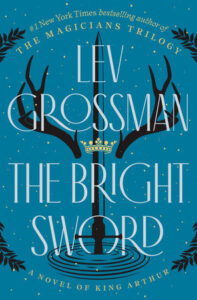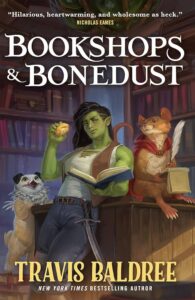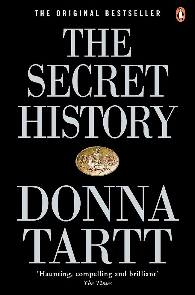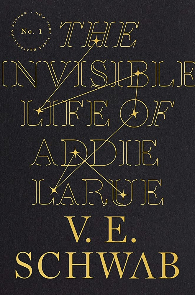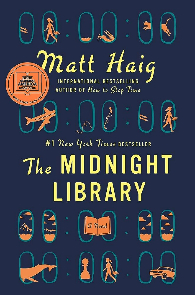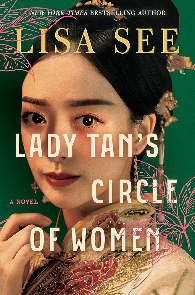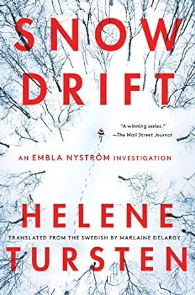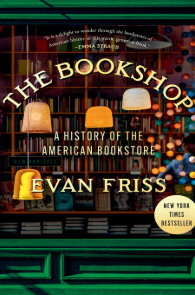Literature
Arab-American Heritage Month
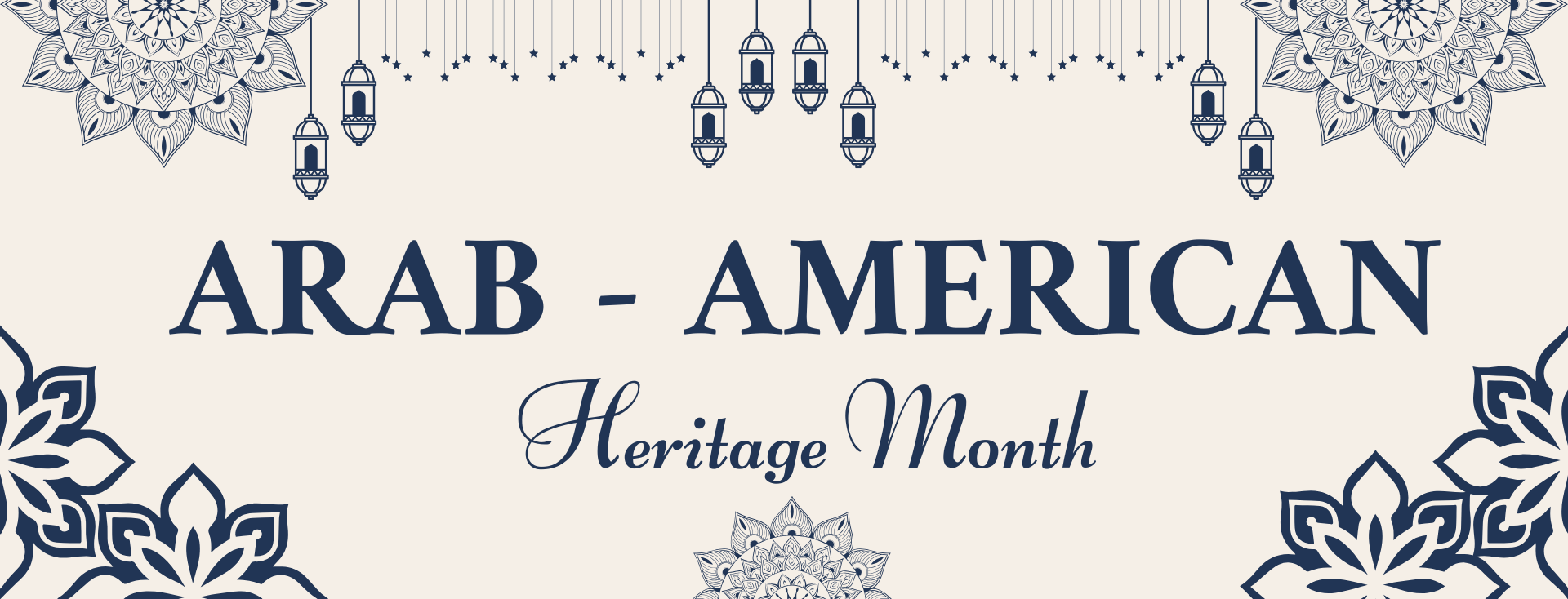 Celebrate Arab-American Heritage Month by exploring these captivating books, including fiction, non-fiction, and unique perspectives on Arab-American experiences and culture. Check out more at UCB Overdrive!
Celebrate Arab-American Heritage Month by exploring these captivating books, including fiction, non-fiction, and unique perspectives on Arab-American experiences and culture. Check out more at UCB Overdrive!
Moustafa Bayoumi
Zeyn Joukhadar
Etaf Rum
Laila Halaby
Paul Aziz Zarou
Diana Abu-Jaber
Rhoda Kanaaneh
Hala Alyan
Huda Fahmy
Bibliographie de la littérature française (BLF)
The UC Berkeley Library has initiated a database trial to the Bibliographie de la littérature française (BLF). The trial ends on March 31, 2025.
Originally part (from 1894) of the quarterly issues of the Revue d’Histoire littéraire de la France (RHLF), and since 2002, it has been an annual volume published in special editions. It gathers together references of French and Francophone literatures from the 16th century to the present day. The BLF was first published by Armand Colin until 1997; then by the Presses Universitaires de France; and since 2017 by Classiques Garnier.
Since 1996, the BLF has been the result of the joint work of a team at the Bibliothèque nationale de France, who is in charge of the indexing, and the Société d’histoire littéraire de France. The digital publisher of the BLF, Classiques Garnier Numérique, ensures the technical management and updates of the database.
The BLF is updated daily, as soon as new publications are indexed. Thanks to this, it constitutes a unique tool for researchers, teachers, students, and all those who are seeking to inform themselves about French literature, writers, subjects or periods. More than 200,000 detailed records from 1998 to the present day are currently online, including 105,000+ book chapters; 75,000+ journal articles; and 28,000+ reviews.
If you are accessing the resource from an off-campus location, please log in using proxy or VPN. Feedback is welcome and can be sent to cpotts@berkeley.edu at any time.
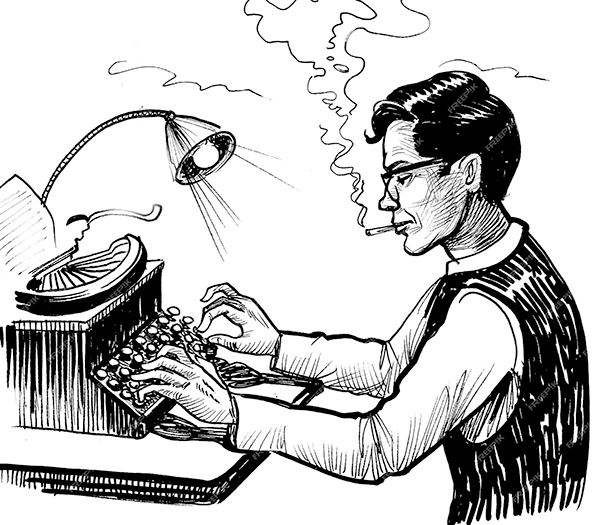
Women’s History Month 2025

Celebrate Women’s History Month this March with women in history and those who are history in the making! For more check out UCB Overdrive today!
New Books by Known Authors:
Nonfiction:
Sonia Sotomayor
Nemonte Nenquimo
Safiya Sinclair
Fiction:
Coco Mellors
Hanya Yanagihara
Helen Fielding
Poetry:
Research Tips: Researching the Author
Many of us, alongside reading poetry and novels or travel narratives, want to know about the context in which the author lived. Who were their families? Did they have a specific person of whom they dreamed when they wrote about love? Understanding the author can give us a better understanding of their meaning, their focus, and their world.
Unsurprisingly, I’d recommend starting with what other scholars have written. If those books don’t exist, or I am after a deeper understanding, I would start looking into what I could sketch out about the author and then look for unpublished papers in archival collections or other repositories using search interfaces such as ArchiveGrid or ArchiveFinder.
The Case Study: Angelina Weld Grimké

For the purposes of this exploration, I’m going to look at one of my many favorite poets: Angelina Weld Grimké (Wikipedia). This poet, born in 1880 in Boston, wrote poignant poems about life and love, many of which were published in the 1910s. They died in 1958 in New York City.
Based on that information, I expect Grimké to have possibly written and received letters to and from family and publishers; to maybe have kept account books or diaries; and possibly to appear in or have created family papers.
There are other kinds of sources that might exist for our purposes as well, but I’m sticking to these for now.
Looking for Unpublished Materials
Unpublished material such as letters is usually held by archives; historical societies/museums; estates; or family/friends. The latter two can be a harder reach, but the first two usually try to let researchers know what they hold. With that aim, many archives upload their finding aids (here’s information from Bancroft Library about what a finding aid is) into collective search interfaces like ArchiveGrid and ArchiveFinder. To find additional ways to search archival collections, take a look at the Library Resource Guide History: Locating Archives.
To use either of those two databases, I usually recommend writing out a list of possible permutations of the person’s name. “Angelina Weld Grimké” might written as such, but it also might appear as:
- Angelina Grimké
- Angelina Weld Grimke
- Angelina Grimke
Some English language search interfaces are designed to ignore accents, and some will fail a search if the characters in a name do not precisely mirror whatever a finding aid says.
Searching ArchiveGrid
OCLC runs this platform and, as far as library search interfaces go, I like it well enough. Do be aware that it sits behind a paywall and you must be logged in with your institution to use it.

Once I have the initial search page up, I usually start my search with the full, formal name; in this case (Angelina Weld Grimké) without quotation marks and with the accent over the “e.”
In this case, I got two results, one of which was the “Weld-Grimké family papers.” When I use the link to the University of Michigan’s finding aid, however, I find out that the collection, substantial at 14 linear feet, focuses on Angelina Weld Grimké’s grandparents, one of whom was abolitionist Angelina Grimké.

The second result, relating to scholar and poet Akasha Hull, is actually more on point as Hull wrote about Angelina Weld Grimké. Based on the collection listed in New York Public Library’s finding aid, however, material about Angelina Weld Grimké is likely to be sparse as the “Scope and arrangement” section note that the collection covers a significant number of topics and the “Detailed description” only mentions Grimké once.
At this point, I ran the other permutations of the name and didn’t get any other relevant collections. So, I move on to the next resource.
Using ArchiveFinder
ProQuest runs ArchiveFinder and I am not a big fan of their interface, largely because of the layout. The point and goal of the interface is much the same, but different archives/repositories subscribe and use different interfaces, which means I need to search both for a wider results list.
So, I start with the same name and search for (Angelina Weld Grimké).

The results here are much more directly on topic. I still get the Michigan result for the Weld family papers at the top. The following results, however, are new and include a collection called “Grimké, Angelina Weld” AND “Angelina Weld Grimké papers, 1887-1958” both at Howard. A few of the other collections, including Fisk University’s “Negro collection” appear to hold potentially interesting information.
Reading a Relevant Finding Aid
In deciding which collections to focus on, I read the associated finding aids, focusing first on description and size. For Howard’s “Grimké, Angelina Weld” (finding aid) is 8 linear feet and includes drafts as well as published material.

Given the highly-relevant description, I then skim the rest of the finding aid, which includes folder and box level description. That means Howard hasn’t recorded information about every piece of information in the box, but you can get a great sense of what’s there. For example, the description for Box 38, folder 15:
Series F Notebooks Box 38-15 French vocabulary exercises, writings of prose and poetry, and recipes
suggests that it contains some poetry along with other types of material. That might not give a clear sense of what poetry is in there or how it’s presented, but something of interest is there! Or, I think it will be. My personal, vague, castle-in-the-sky hope is that there will be poems about food scrawled on whatever recipe information is there.
If there are only one or two papers that are of interest, then I’d likely check the archive’s information about rights and reproductions. If they have options for digital copies, I might request the page or two.
In this case, there are hundreds of items associated with the collection. Most archives won’t copy that number of pages for staff and resource reasons. In consequence,
I would consider a visit to the archive and read their informational pages on the subject. In this case, Howard’s Moorland-Springarn Research Center page on the subject suggests writing to them before making a research appointment.
Additional Steps
There are several additional approaches to finding additional material about an author. For Grimké, I’d head to historical newspaper sets such as the Library of Congress’ Chronicling America.
I would also take a look for government records in Ancestry.com (public libraries often have subscriptions, for Berkeley see here), the National Records and Archives Association, as well as check historical association centers around where Grimké was born, lived, and died.
There is a lot one can do to find information. Whether one wants to take those steps often depends on your time, funding, and how relevant the information is to your research.
If I’m focused on one author, then I’d likely try to find out what’s out there. If I’m looking for 100 people, I wouldn’t do in-depth research into each but focus on specific types of information.
Let your literature librarian know if you’d like to talk about research strategies for you.
New Library Guide for Iberian Literatures
Today, we are launching a new library research guide for Iberian Literatures & Criticism. The new guide will improve navigation and discovery in UC Berkeley’s vast literature collection in Romance languages, mostly found in a classification commonly known as the PQs. Over the course of the past year, we have critically reviewed the former guides, weeded outdated resources, and replaced them with more current content with links to digital resources when available.
This literary research guide, like the others for Italian and French & Francophone literatures launched last year, is now benefiting from the LibGuides platform, which makes it much easier to revise than the former PDFs. The guide is structured by sections for article databases, general guides and literary histories, reference tools, poetry, theater & performance, and literary periods. In addition to literature in Spanish and Portuguese, it also includes less commonly taught literatures and languages such as Catalan, Galician, Basque, Arabic, Ladino, and more. There is also a new section for Luso-African and Hispano-African literature.
The online guide also interfaces seamlessly with related guides published by the UC Berkeley Library. For example, on the home page, there is a prominent link to the online list of recently acquired publications on the general Spanish & Portuguese guide, making it even easier to stay current on new books in all of the call number ranges.
Because the guides are much easier to update, they encourage user interaction and invite community suggestions for inclusion (or deletion).
When you have time, please take a look at this new resource and let us know what you think.
Claude Potts, Romance Languages Librarian
Cameron Flynn, RLL Doctoral Candidate
PhiloBiblon 2025 n. 1 (enero): Final de una época
La semana pasada colgué las versiones últimas y finales de BETA, BITECA y BITAGAP en la web de PhiloBiblon de la Universitat Pompeu Fabra. Desde este momento no habrá más cambios en los datos presentados allí. Dentro de unos meses, un PhiloBiblon nuevo y renovado aparecerá en FactGrid:PhiloBiblon en la universidad alemana de Jena, donde compartirá espacio virtual con otros cuarenta proyectos históricos, desde los estudios cuneiformes hasta la época nazi en Alemania.
Es el final de un largo periplo que empezó en 1975 con el proyecto Dictionary of the Old Spanish Language de la University of Wisconsin, encabezado por Lloyd Kasten, con quien había estudiado yo ecdótica unos diez años antes. Fue el primer proyecto de humanidades digitales en el ámbito hispanico. Kasten fue secundado por su joven colega John Nitti, el arquitecto del entorno informático del proyecto. Para garantizar la autenticidad del corpus de español antiguo, se necesitaba un repertorio de manuscritos españoles escritos antes de 1501. Tal repertorio no existió y pusieron a ayudantes de investigación a vaciar dos obras, el Catálogo de los manuscritos castellanos de la Real Biblioteca de El Escorial, del benemérito, y martirizado, padre Julián Zarco Cuevas; y la Bibliografía de la literatura hispánica del igualmente benemérito José Simón Díaz. Identificaron 966 obras y Kasten y Nitti imprimieron el resultado como Bibliography of Old Spanish Texts en 1975. Siguió una segunda edición en 1977, con 1869 fichas. Al año siguiente yo me encontraba en la Hispanic Society, redactando su catálogo de manuscritos medievales y enviando adiciones y correcciones a BOOST. En 1981 Kasten y Nitti me ofrecieron la dirección de BOOST como proyecto autónomo, y lo demás, como dicen, es historia.
Pronto tuve un colaborador, un jovencísimo Ángel Gómez Moreno (UCM), que acababa de pasar un año de estudios de posgrado en Wisconsin. Al volver a España se lanzó con entusiasmo a la tarea de repasar los ficheros y catálogos (en papel, por supuesto), de la BNE, la Biblioteca de Palacio, la RAE y la RAH, siempre en busca de nuevos manuscritos para BOOST. En los años 80 estudiantes de carrera y posgrado sirvieron como ayudantes de investigación, primero María Morrás (UPF), y en los 90 Ángela Moll Dexeus y Antonio Cortijo (UC Santa Barbara), durante su paso por las aulas de Berkeley. Ya desde 1993 BOOST era BETA, la Bibliografía Española de Textos Antiguos en CD-ROM y en la red en 1997. En 2000 Ángel me mandó como becario por dos años a Óscar Perea Rodríguez; y desde entonces Óscar ha sido mi mano derecha en el proyecto, organizando los seminarios de PhiloBiblon, primero en San Millán de la Cogolla y luego en Madrid. Más recientemente ha trabajado como ayudante en Berkeley Heather Bamford (George Washington University), mientras que, en España, en la UCM, Álvaro Bustos ha participado en varias campañas de investigación conmigo y ha reclutado nuevos miembros del equipo de BETA.
Kasten y Nitti fueron responsables también de la Bibliography of Old Catalan Texts (BOOCT, 1985), base de datos gemela a BOOST, compilada por Beatrice Concheff (†), antigua alumna de la University of Wisconsin y que, en aquel tiempo, ejercía como profesora de inglés en una escuela de lenguas de Barcelona. Era una aficionada a la literatura catalana, pero no era experta en ella en términos académicos; por ello, la inmensa mayoría de sus citas a obras y manuscritos medievales provenía de fuentes secundarias. Y además, en el año de 1989, por desgracia, Concheff se encontraba con una salud muy delicada y era consciente de que no podría dedicarse a la compilación de una segunda edición de BOOCT.
En una de las sesiones de trabajo del congreso de la Asociación Internacional de Hispanistas de Barcelona de 1989, mi amigo Francisco Marcos Marín me presentó a Vicenç Beltrán. Expuesto el caso a Vicenç, vio inmediatamente la importancia de seguir adelante con BOOCT. En seguida Vicenç embarcó en el proyecto a su jovencísima alumna, doctoranda en aquel entonces, Gemma Avenoza i Vera (†). Fue Gemma la que enseguida quedó al cargo del mismo. Era ya una codicóloga consumada, como se puede comprobar en su tesis doctoral, Repertori dels manuscrits en llengües romàniques conservats a biblioteques barcelonines. Además, Gemma era de los escasos expertos en filología de la época que sabía manejar un ordenador, habilidad absolutamente necesaria para trabajar con PhiloBiblon. Ambos, Gemma y Vicenç, romanistas al estilo antiguo y expertos no sólo en las literaturas medievales ibéricas, sino también en las de Francia e Italia, comprobaron la utilidad del (entonces recién bautizado) PhiloBiblon, pues podría facilitar la tarea de catalogación y descripción de los textos y testimonios del corpus de literatura medieval ibérica en lenguas castellana, catalana, portuguesa y gallego-portuguesa.
A los pocos meses de ese primer encuentro en Barcelona, en el otoño de 1989 Gemma ya pudo visitarme en Berkeley para adentrarse en el arcano mundo de PhiloBiblon y encargarse, junto con Vicenç, de BOOCT, que pronto cambiaría su nombre en BITECA (Bibliografia de Textos Catalans Antics), de forma paralela a BETA. Desde entonces hasta su demasiado temprana muerte en 2021, Gemma fue la mano directriz de BITECA, pronto secundada por Lourdes Soriano, alumna tanto de Gemma como de Vicenç. Durante casi 20 años, pues, Gemma, Lourdes y yo estuvimos en contacto constante. Las dos supieron atraer a más de medio centenar de colaboradores y ayudantes de investigacíon. Los miembros actuales del equipo de BITECA son Joan Mahiques Climent (Universitat Jaume I), Joan M. Perujo (Universitat d’Alacant), Helena Rovira Cerdà (Universidad de Murcia), Glòria Sabaté (Universitat de Barcelona) y Ferran Triadó Sales, (Universitat de Barcelona), todos ellos alumnos o antiguos alumnos de Gemma y Lourdes.
Ya por la misma época, en 1988, entablé discusiones con mi querido colega y vis-à-vis (literalmente) en el departamento de español y portugués de Berkeley, Arthur Askins, sobre la posibilidad de crear una base de datos paralalela a BOOST y BOOCT. Se llamaría Bibliography of Old Portuguese Texts (BOOPT) y formaría un nuevo tomo en la “Bibliographic Series” de la Hispanic Seminary of Medieval Studies. Pero ya la época de publicación en papel había pasado. Con una subvención de la Sociedad Estatal del Quinto Centenario, BETA, BITECA y el recien bautizado BITAP (Bibliografia de Textos Antigos Portugueses) saldría en disco CD-ROM en 1993. Más tarde, el nombre BITAP se cambiaría en BITAGAP (Bibliografia de Textos Antigos Galegos e Portugueses).
Arthur había sido testigo ocular de mis investigaciones con BOOST desde 1981 y se había dado cuenta de la utilidad de las bases de datos en sus propias investigaciones sobre la biblioteca de Fernando Colón. Estaba intrigado, pero se dio cuenta desde el principio que esto tendría que ser un proyecto de equipo. Reclutó a sus amigos y antiguos compañeros de estudios de Berkeley, Harvey Sharrer (†), profesor en la University of California, Santa Bárbara, y Martha E. Schaffer, en aquel entonces profesora la University of Chicago y actualmente en la University of San Francisco.
Iniciados sus viajes de investigación anuales en Portugal, muy pronto los tres persuadieron a Aida Fernanda Dias (†), profesora de la Universidade de Coimbra, que se uniera al equipo. Luego, comenzando en 2008, se incorporaron Pedro Pinto (Universidade Nova de Lisboa), con su olfato extraordinario para encontrar manuscritos de interés, Cristina Sobral (Universidade de Lisboa), Filipe Alves Moreira (Universidade do Porto, actualmente Universidade Aberta), Maria de Lurdes Rosa (Universidade Nova de Lisboa), Ricardo Pichel Gotérrez (Universidade de Santiago y actualmente Universidad de Educación a Distancia), Mariña Arbor (Universidade de Santiago y Diana Fontão (Universidade de Porto / Universidad de Salamanca).
Como en los casos de BETA y BITECA, el equipo de BITAGAP ha contado con al menos una centena de buenos colaboradores, entre estudiantes y colegas del mundo entero.
PhiloBiblon no sólo ha sido creación de las personas mencionadas aquí, sino de todos aquellos colegas que nos han escrito pidiendo u ofreciendo información sobre tal o cual texto, manuscrito o persona. Por y para ellos hemos dedicado tanto esfuerzo durante más de cuarenta años, el mismo esfuerzo precisamente que todos los miembros del equipo vamos a continuar haciendo en esta nueva etapa que se abre ante nosotros.
Charles B. Faulhaber
University of California, Berkeley
Referencias:
Faulhaber, Charles B., PhiloBiblon, pasado, presente, futuro: Historia de un proyecto de investigación, San Millán de la Cogolla: Congreso Internacional. Códices literarios españoles (Edad media) 2007-11-29
_____, PhiloBiblon: Pasado y futuro, (Incipit 29 2009: pp. 191-200)
_____, PhiloBiblon, Information Technology, and Medieval Spanish Literature: A Balance Sheet, Bern: Humanitats a la Xarxa: Món Medieval – Humanities on the Web: The Medieval World 2014: pp. 15-43
_____, PhiloBiblon and the Semantic Web. Notes for a Future History, València: La Literatura Medieval Hispánica en la Imprenta (1475-1600) 2016: pp. 75-93
____. Harvey L. Sharrer (1940-2024). PhiloBiblon blog 2024-10-10
Dias, Aida Fernanda, Arthur Lee-Francis Askins, Harvey L. Sharrer, A ‘Bibliografia de Textos Antigos Galegos e Portugueses’ na Internet, Lisboa: Revista Portuguesa de História do Livro 1 n. 2 1998: pp. 173-80)
Martín Molares, Mónica PhiloBiblon 2020 n. 1 (febrero): Crónica del V Seminario Internacional PhiloBiblon-BNE-UCM (Madrid, junio de 2019), (PhiloBiblon Blog 2020-02-28)
Perea Rodríguez, Óscar, y Charles B. Faulhaber, Esbozos sobre la evolución y el futuro de un pionero de las humanidades digitales hispánicas: el proyecto de PhiloBiblon, Revista Digital Universitaria 18 n. 1 2017
Schaffer, Martha E. Homenagem a Aida Fernanda Dias oferecida pelos seus colegas de Philobiblon, eHumanista 31 2015: pp. i-v, 1-275)
Sharrer, Harvey L., BITAGAP (Bibliografia de Textos Antigos Galegos e Portugueses): um armazém da memória histórica, Madrid: (Tenh’eu que mi fez el i mui gran ben. Estudos sobre cultura escrita medieval dedicados a Harvey L. Sharrer 2022: pp. 39-67)
_____, A BITAGAP no seu 30o aniversário: a expansão de dados e expectativas para o futuro, Berlin: O Medievalismo no século XXI 2020: pp. 157-68)
_____, The BITAGAP project since 1988 – Expansion of the corpus of texts and important discoveries, Bern: Humanitats a la Xarxa: Món Medieval – Humanities on the Web: The Medieval World 2014: pp. 169-83
Library event: Que vlo-ve? and Le Mot
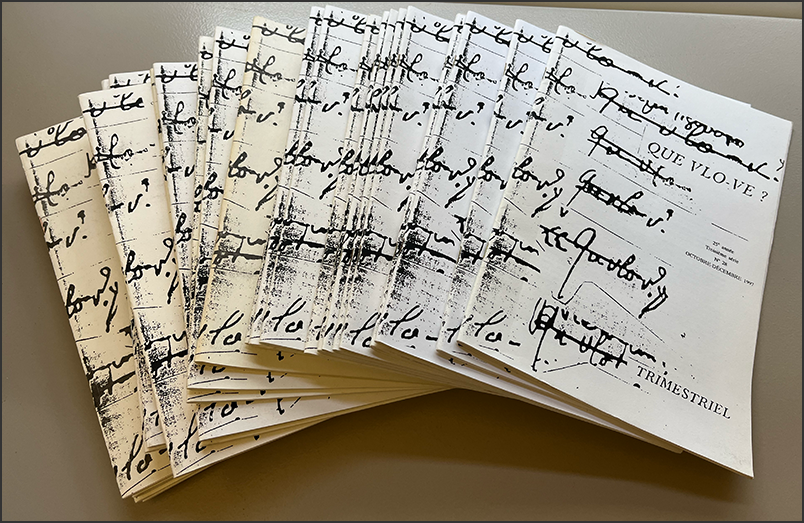
In these austere times where both financial resources and shelving space are limited, it has become a rare occasion when we are able to pursue full-runs of older periodicals. However, the recent acquisition of these two—one from France and the other from Belgium—in more or less the same time period has sparked the idea of hosting a hands-on journal presentation for those interested in interacting with the journals before the issues are processed, cataloged, bound, and stored in their distinct library locations.
Que vlo-ve?: bulletin de l’Association internationale des amis de Guillaume Apollinaire was published from January 1973 to 2004. Centered on the work of the celebrated 20th century French poet, playwright, short story writer, novelist and art critic of Polish descent, its intention was not to duplicate articles published in the annual Guillaume Apollinaire series by Lettres Modernes. Instead, it was meant to welcome articles that could not easily find a place, news of the association and of the museum as well as news that members of the scholarly society wished to disseminate internationally.
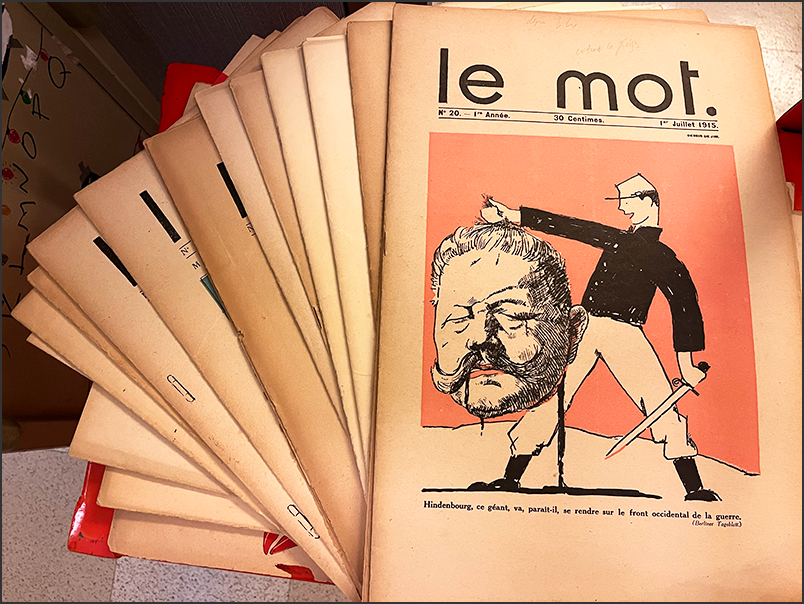
Sardonic and visually rich, this wartime French literary and artistic journal published by Jean Cocteau and Paul Iribe, was characterized by a restrained modernism and a fiercely nationalistic, anti-German perspective. Le Mot (The Word) was a wartime sequel to François Bernouard’s Schéhérazade: Album Mensuel d’Oeuvres Inédites d’Art et de Littérature (1909-11). Its primary purpose was to establish an entirely French artistic style and taste—anti-bourgeois and uninfluenced by German modernism.
Reports of the brutal treatment of noncombatants (such as mass executions that included women, small children, and the elderly) and damage to towns and cultural centers shocked the public, leading to a characterization, particularly within France, of the German soldiers as destructive and uncivilized “huns” particularly within wartime propaganda. The bi-monthly periodical included cover designs by not only Iribe and Cocteau but also Sem, Raoul Dufy, Léon Bakst, André Lhote, Albert Gleizes, and Pierre-Emile Legrain. Cocteau signed his drawings as Jim, the name of his dog. In August 1914, when war was declared with Germany, he was twenty-five years old. Like many patriotic young Frenchmen, Cocteau tried to enlist but was turned down because of his health. Looking for other ways to serve his country and the war effort, he collaborated with Iribe to launch Le Mot. As a teenager, Iribe drew illustrations for the popular caricature journal L’Assiette au Beurre (The Butter Plate), which ran from 1902 to 1912. He also freelanced for Le Témoin, Rire, Sourire and other periodicals and was enthusiastic about starting a satirical journal of his own.
Please join us for an interactive show and tell with special guest Willard Bohn, alumnus of the Department of French and Professor Emeritus of French and Comparative Literature at Illinois State University.
Thursday, February 6
4-5:30 pm
223 Doe Library (accessible through south end of the Heyns Reading Room)
No rsvp required.
—-
Claude H. Potts (he/him)
Librarian for Romance Language Collections
2024 Speculative Fiction Read and Enjoyed
Some of you know that I (Bee, the Lit Librarian) read heavily in speculative fiction. For our mutual enjoyed, I’ve compiled a list of some of my colleagues and my favorite 2024 reads in the genre. Please note that most of these books are from 2024, but a few were published earlier. Please note that this list is far from comprehensive.
Here they are!
The Bias of Notability in Wikipedia
Let’s chat about Wikipedia as a source of general information. For many people, Wikipedia is a first stop to check on information about who’s who, genre overviews, lists of books, and more. In theory, as a place to find the “sum of all human knowledge” (Wikipedia: About), it should be a good place to get an overview of what’s out there to know. Yet, using Wikipedia’s coverage leads to a skewed understanding of what’s available. Instead of being a reliable source for all human knowledge, Wikipedia’s policies means it reproduces institutionalized biases related to gender, community groups, and other categories of identity and knowledge. Furthermore, those policies mean that the platform’s biases are very difficult to address despite Wikipedia’s calls for public contributions and claims to desire to be an unbiased source of information.
What do I mean by that?
Bluntly, I mean that Wikipedia’s coverage privileges white, male, English-speaking people in positions of power (Wikipedia: Gender Bias; Racial Bias). I personally think that having editors, having some checks, are incredibly important. There needs to be some level of standard, but there are problems with how the standards for things like notability are enforced.
But why?
The issue is partly one of Wikipedia’s focus on “Notability” (Wikipedia: Notability). Wikipedia’s guidelines claim that not everything needs an article. To be included within Wikipedia, contributing authors are expected to provide information that is “worthy” of notice. Yet, worth is a value judgement. So, who’s judging that worth and on what criteria?
The answer is that Wikipedia has an excellent team of employees and volunteer editors who are predominantly white men. Most humans are predominantly interested in things that, in some way or another, represent themselves (Hall ed., Representation, UC Library Search). Those white men with their particular interests then evaluate worth based on criteria of things like how many people have written about someone. Given historic inequalities and continued social bias, men in positions of power are more likely to be written about than other groups. Those “worthy of notice” end up being men.
Take, for example, the problem of a diplomat’s wife Varvara Dukhovskaia. For a person like this princess, we have a woman whose job is partly predicated on her husband’s, but she was part of his team (if you allow) and an essential part of the job. Particularly in a past when women were denied access to most official positions, women performed labor analogous to a man’s without the official acknowledgement. A diplomat’s wife, for example, was expected to host events, make connections, and spread good will for the state they represented … which was precisely what many diplomats were hired to do. The woman, however, was not socially or legally considered a diplomat in and of themselves – they were often the “wife,” “daughter,” or “mother.”
In this case, Varvara Dukhovskaia was an influential presence, known as a “first lady of Siberia.” She spearheaded efforts to establish schools, was part of problems with discussions of Russian government and nationalism, and wrote about her efforts. Dukhovskaia’s autobiography (on Project Gutenberg) has been translated into English but the majority of scholarship about her is in other languages (English language scholarship includes Katya Hokanson’s A Woman’s Empire: Russian Women and Imperial Expansion in Asia on JSTOR).
So, we have a highly influential woman in a position of power about whom multiple scholars have written. Yet, while Wikipedia has an article about her husband (Wikipedia), Wikipedia’s editors refused to publish an entry about her because writing a travel narrative is not notable.
This example is hardly the only one of its kind. There are multiple examples one could refer to about how Wikipedia’s editors refused an article because the person, the idea, the movement, the book, wasn’t important enough … but the problem was circular. The idea wasn’t “important” because of institutional bias, which meant it didn’t spread, which in turn meant Wikipedia didn’t value it.
For students and scholars in the humanities, that means Wikipedia isn’t necessarily a great place to find information about the people, the books, the media, the ideas, the groups, that they study. And, not only does the current content skew toward institutionalized forms of discrimination, but that imbalance is difficult to address because Wikipedia actively turns down material that could address some of those problems.
So what to do?
What can we currently do to address some of these considerations? One of the ways to increase notability is to scour scholarship for references to the different people/ideas that are important to include. Another way is to begin writing about the people, ideas, and things that are missing in related articles. For example, including a paragraph in the husband’s Wikipedia article about the person raises their “Notability” and leads toward Wikipedia’s viewing the person, the book, the event as worthy of having individual entries.
To get some experience with how to do this, join us for UC’s I Love Data Week’s Wikipedia Edit-a-Thon on Feb. 10! You can find out more about it on our guide.
Winter Reads 2024

Cozy up this winter with these great reads from our library. These novels range from fantasy to mystery to romance and are perfect for cold weather. Check out UCB Overdrive for more!
Donna Tartt
V. E. Schwab
Matt Haig
Lisa See
Helene Tursten
Sally Rooney
Evan Friss
Dolly Alderton
Louisa May Alcott
